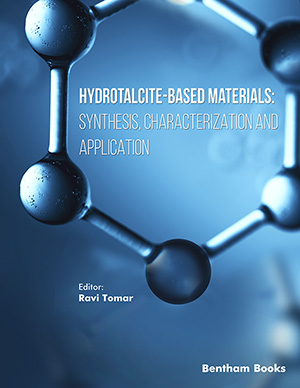
Abstract
Polycystic ovary syndrome (PCOS/PCOD) indicates a common, multifactorial endocrine condition marked by polycystic ovaries, chronic anovulation, and hyperandrogenism, resulting in asymmetric menstrual periods, hirsutism, acne, and infertility. Standard treatment for PCOS is often accompanied by adverse effects, and is ineffective in certain situations, refutation-based medical guidance accented an integrative progress. Furthermore, women suffering from PCOS may benefit from alternative treatments. Herbal treatment includes herbs that have a phytoestrogenic and non-estrogenic nature, including Mentha spicata, Panax ginseng, Glycyrrhiza glabra, Aloe barbadensis, Cinnamomum zeylanicum, Matricaria chamomilla, Trigonella foenum-graecum, Linum usitatissimum, and Zingiber officinale, which are effective and safe. This review focuses on the reproductive endocrine effects of phytomedicine as a choice treatment so as to PCOD and accompanying oligo/amenorrhoea, acne, hirsutism, and infertility.
Keywords: Polycystic ovary syndrome, hirsutism, herbs, acne, amenorrhoea, natural medicine, hormone abnormality.
[http://dx.doi.org/10.1186/1472-6882-14-511] [PMID: 25524718]
[http://dx.doi.org/10.15296/ijwhr.2019.72]
[http://dx.doi.org/10.1186/1472-6882-14-472]
[http://dx.doi.org/10.1016/S0277-9536(01)00034-X] [PMID: 11824912]
[http://dx.doi.org/10.1038/ajg.2015.233] [PMID: 26303131]
[http://dx.doi.org/10.1142/S0192415X17500252] [PMID: 28359195]
[http://dx.doi.org/10.3389/fphys.2016.00124] [PMID: 27092084]
[http://dx.doi.org/10.1093/fampra/cmu028] [PMID: 24925927]
[http://dx.doi.org/10.1210/jc.2013-2040] [PMID: 24009134]
[http://dx.doi.org/10.1016/S0015-0282(00)00525-2] [PMID: 10856497]
[http://dx.doi.org/10.1016/j.bpobgyn.2004.05.004]
[http://dx.doi.org/10.1016/j.mefs.2018.04.005]
[http://dx.doi.org/10.1093/humrep/dep399] [PMID: 19910321]
[http://dx.doi.org/10.5812/ijem.3644] [PMID: 23843810]
[http://dx.doi.org/10.3390/biom10030352] [PMID: 32106571]
[http://dx.doi.org/10.1007/s00404-006-0171-x] [PMID: 16685527]
[http://dx.doi.org/10.1136/bmj.293.6543.355]
[http://dx.doi.org/10.1210/jc.2013-2978] [PMID: 24178791]
[http://dx.doi.org/10.1016/S0140-6736(03)13409-5] [PMID: 12781553]
[http://dx.doi.org/10.3109/09513590903247873]
[http://dx.doi.org/10.1016/j.bpobgyn.2004.05.007]
[http://dx.doi.org/10.1186/s12958-016-0173-x] [PMID: 27423183]
[http://dx.doi.org/10.12968/bjon.2011.20.16.985] [PMID: 22067491]
[http://dx.doi.org/10.1093/humupd/dms030] [PMID: 22767467]
[http://dx.doi.org/10.1046/j.1365-2265.2000.00884.x] [PMID: 10651757]
[http://dx.doi.org/10.1210/jcem-22-3-325] [PMID: 13899931]
[http://dx.doi.org/10.1093/humrep/der396] [PMID: 22147920]
[http://dx.doi.org/10.1210/jc.83.9.3078] [PMID: 9745406]
[PMID: 21929505]
[http://dx.doi.org/10.1007/s40199-019-00312-0] [PMID: 31741280]
[http://dx.doi.org/10.1016/j.tem.2019.01.005] [PMID: 30712978]
[http://dx.doi.org/10.3389/fphar.2020.01192] [PMID: 32903374]
[http://dx.doi.org/10.3949/ccjm.70.1.31] [PMID: 12549723]
[http://dx.doi.org/10.1186/s13048-020-00633-8]
[http://dx.doi.org/10.1002/ptr.2900] [PMID: 19585478]
[http://dx.doi.org/10.1016/j.jgr.2019.08.007] [PMID: 33192122]
[PMID: 8077314]
[http://dx.doi.org/10.1515/bmc-2020-0005]
[http://dx.doi.org/10.1016/j.nut.2013.02.015] [PMID: 23735317]
[http://dx.doi.org/10.1016/j.steroids.2004.09.005]
[http://dx.doi.org/10.4103/0974-8490.94736] [PMID: 22518083]
[http://dx.doi.org/10.1016/j.fertnstert.2006.11.082] [PMID: 17296187]
[http://dx.doi.org/10.1016/j.ajog.2014.05.009] [PMID: 24813595]
[http://dx.doi.org/10.1016/j.jtcme.2017.04.008] [PMID: 29322000]
[http://dx.doi.org/10.1007/s40618-014-0170-x] [PMID: 25194428]
[http://dx.doi.org/10.4103/jrms.JRMS_100_18] [PMID: 30988683]
[http://dx.doi.org/10.15171/apb.2017.078] [PMID: 29399556]
[http://dx.doi.org/10.1016/j.indcrop.2020.112694]
[http://dx.doi.org/10.1016/j.ejogrb.2006.10.013] [PMID: 17113210]
[http://dx.doi.org/10.1016/j.imr.2018.05.003] [PMID: 30271715]





























